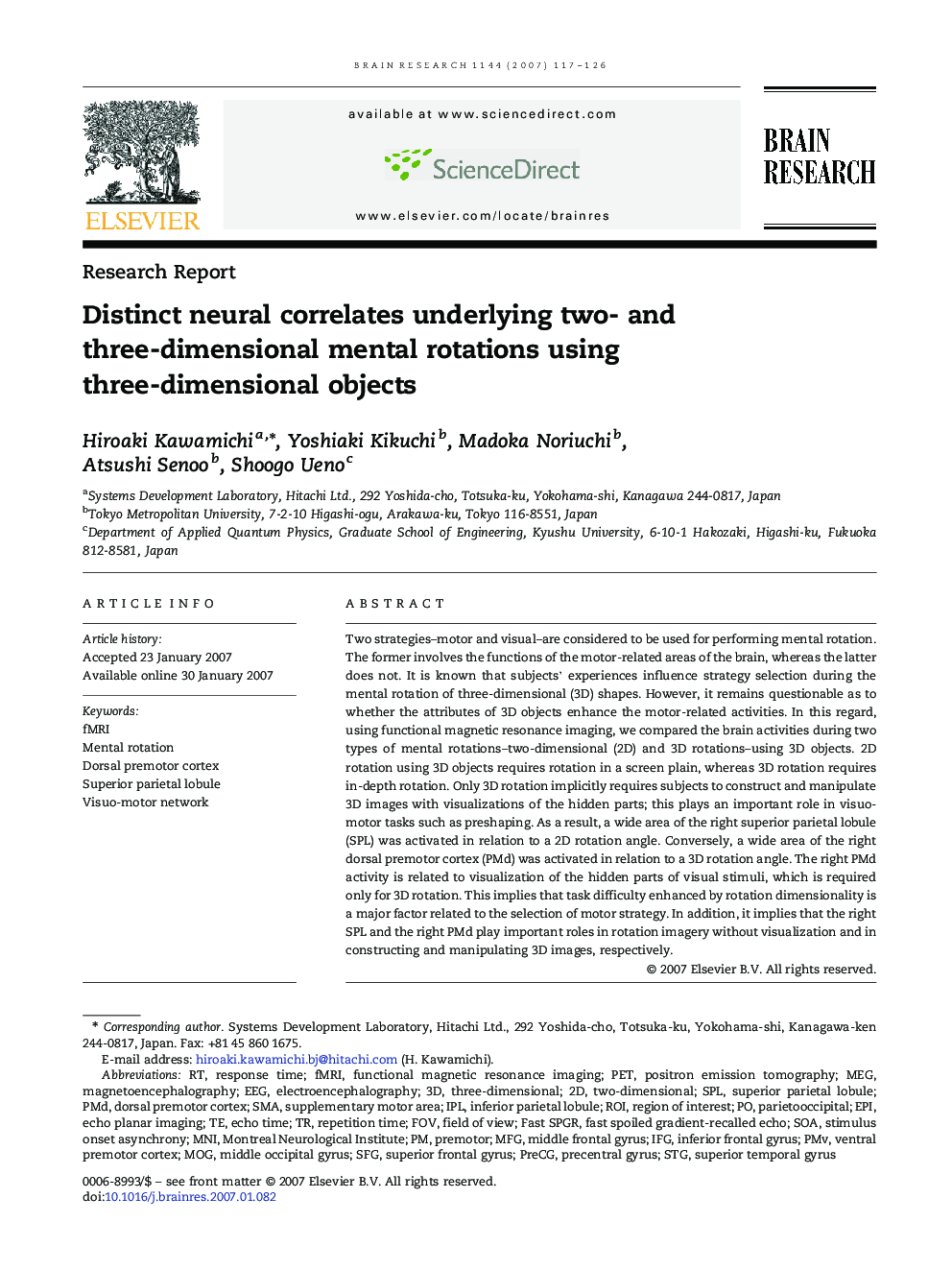| Article ID | Journal | Published Year | Pages | File Type |
|---|---|---|---|---|
| 4331144 | Brain Research | 2007 | 10 Pages |
Two strategies–motor and visual–are considered to be used for performing mental rotation. The former involves the functions of the motor-related areas of the brain, whereas the latter does not. It is known that subjects' experiences influence strategy selection during the mental rotation of three-dimensional (3D) shapes. However, it remains questionable as to whether the attributes of 3D objects enhance the motor-related activities. In this regard, using functional magnetic resonance imaging, we compared the brain activities during two types of mental rotations–two-dimensional (2D) and 3D rotations–using 3D objects. 2D rotation using 3D objects requires rotation in a screen plain, whereas 3D rotation requires in-depth rotation. Only 3D rotation implicitly requires subjects to construct and manipulate 3D images with visualizations of the hidden parts; this plays an important role in visuo-motor tasks such as preshaping. As a result, a wide area of the right superior parietal lobule (SPL) was activated in relation to a 2D rotation angle. Conversely, a wide area of the right dorsal premotor cortex (PMd) was activated in relation to a 3D rotation angle. The right PMd activity is related to visualization of the hidden parts of visual stimuli, which is required only for 3D rotation. This implies that task difficulty enhanced by rotation dimensionality is a major factor related to the selection of motor strategy. In addition, it implies that the right SPL and the right PMd play important roles in rotation imagery without visualization and in constructing and manipulating 3D images, respectively.
